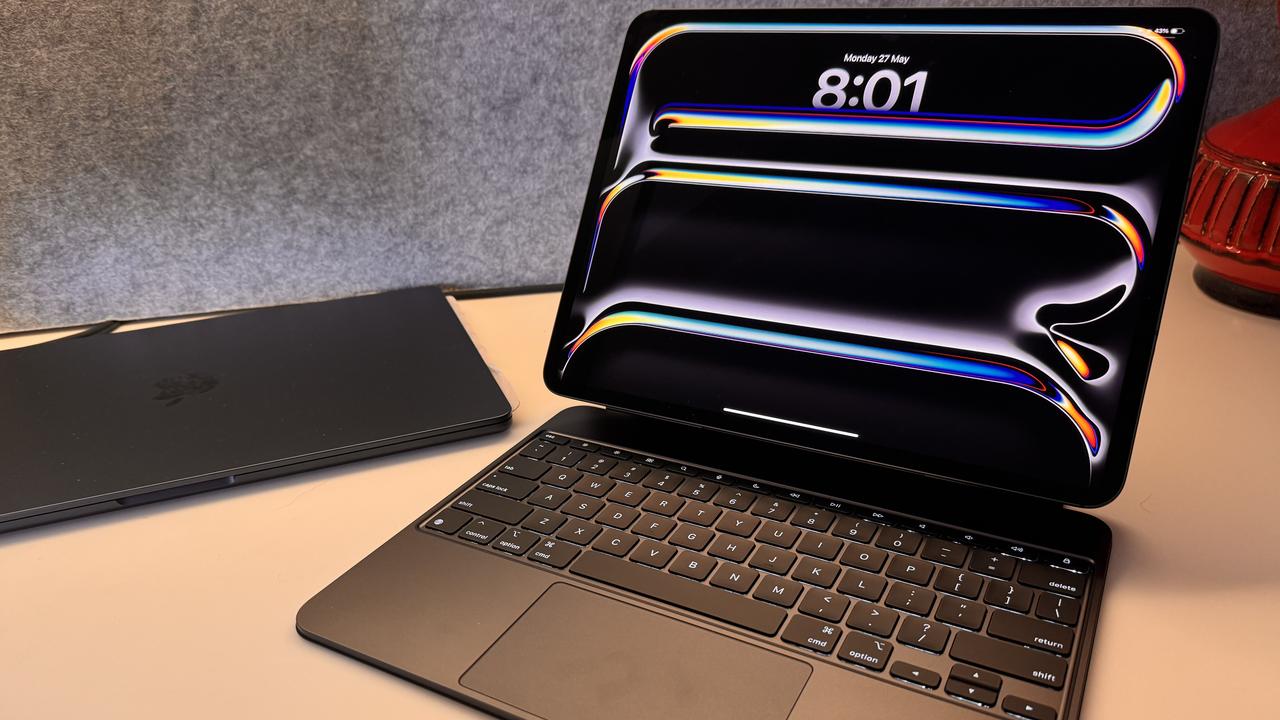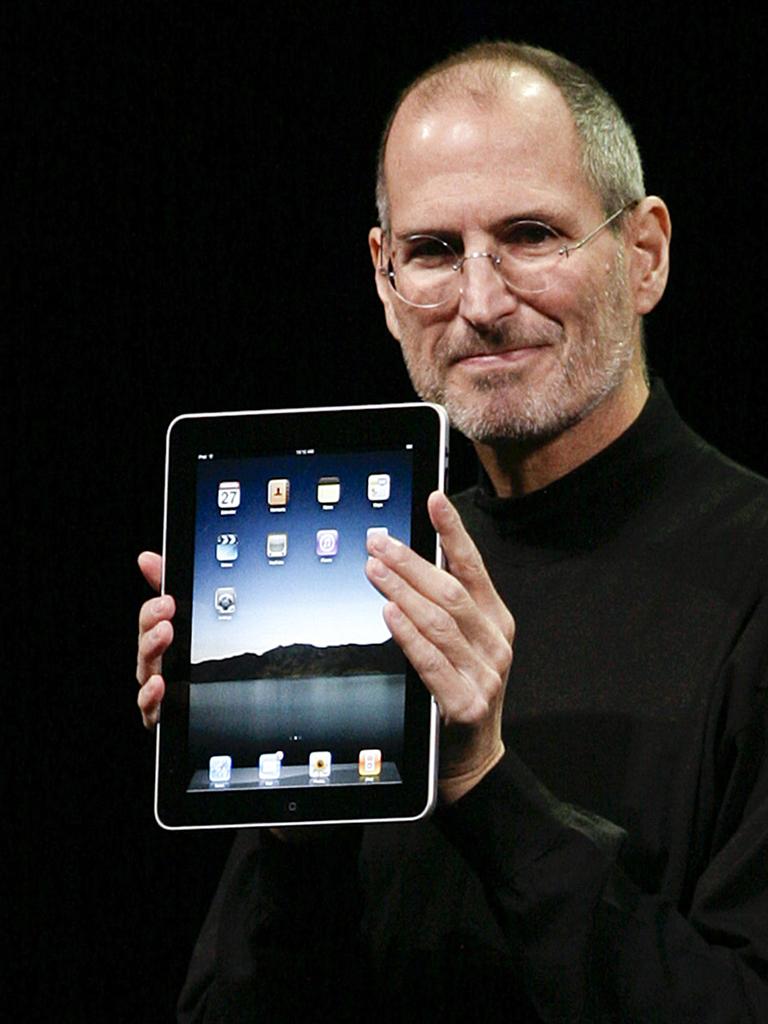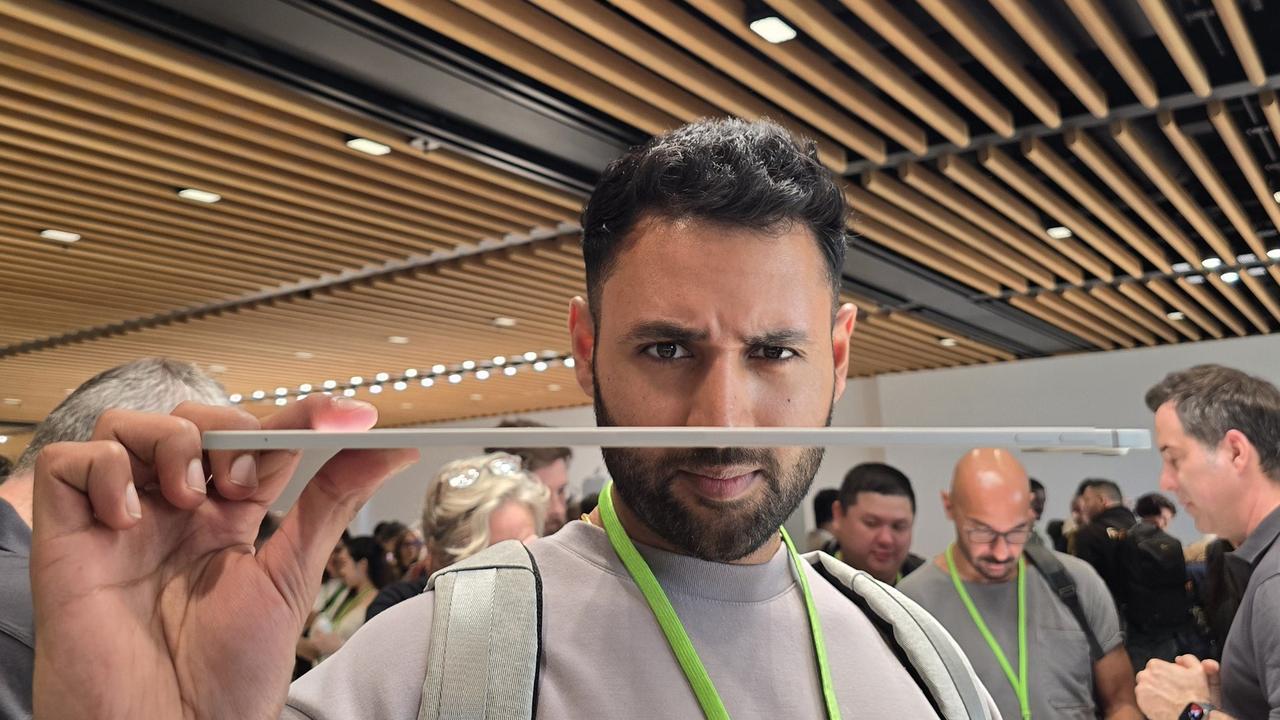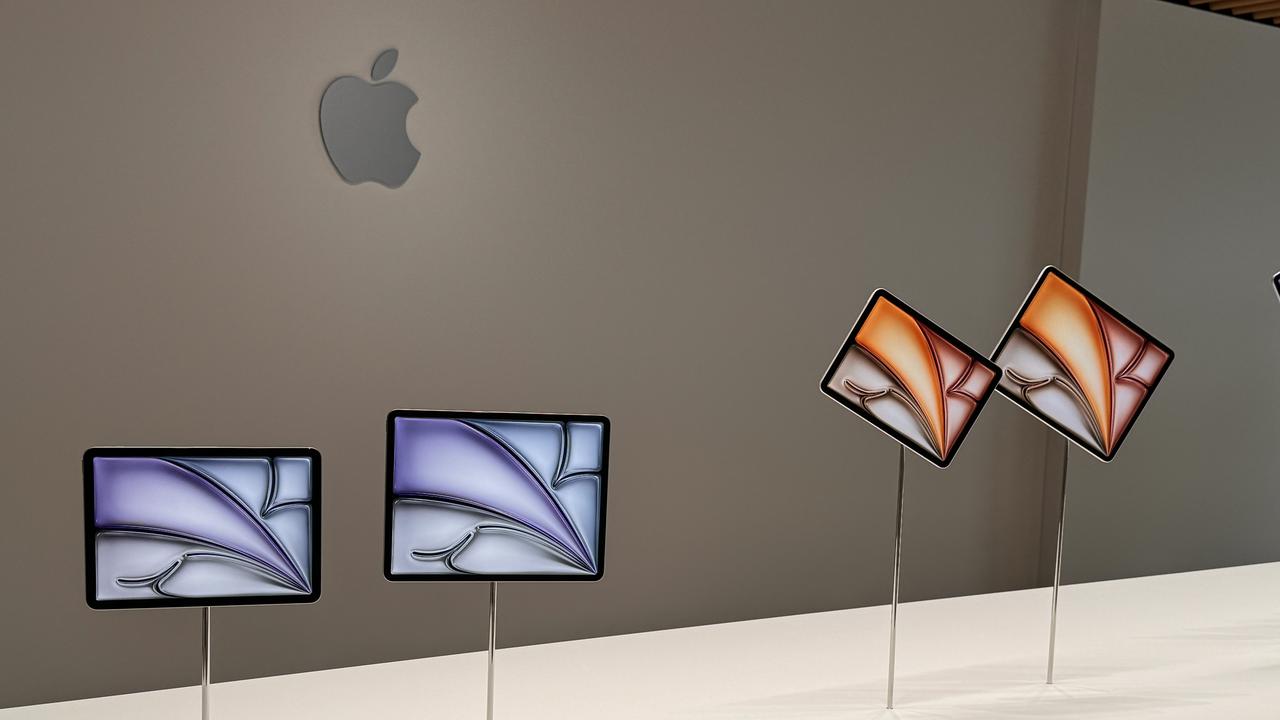The one thing holding Apple’s new iPad back
Apple’s iPad Pro is the thinnest, most advanced it has ever made but does all that firepower mean it’s up to the job of replacing a MacBook? Well, it’s complicated.

Business
Don't miss out on the headlines from Business. Followed categories will be added to My News.
When the first iPad came out early last decade, I was part of an experiment at my then employer – a distinguished broadsheet newspaper in Melbourne.
It was an experiment I was eager to repeat when I took delivery of the latest iPad Pro last week.
Fourteen years ago, I was having a ball as a sports reporter, covering anything from AFL games to the Bells Beach Pro. My office was anywhere from the MCG to Torquay, and my boss gave me a choice. I could continue to use my clunker of a laptop and dodgy Telstra dongle, or I could try one of these new tablet computers Steve Jobs called an iPad.

I took the latter option. It had its own SIM card, meaning I didn’t have to swear at the sky when I tried, many times unsuccessfully, to strike a connection with the Telstra dongle, and it came with a Bluetooth keyboard and folding case that made it look more like a traditional computer.
Even when I lost the Bluetooth keyboard, rushing from the MCG’s media box to a coach’s press conference in the belly of the stadium, which meant I had to file stories using the built-in keyboard on the iPad’s screen, I still found it easier to use than my laptop. It just worked and helped make my workflow more efficient.
Looking at one of the original iPads on the shelf in my office, and its tiny screen and huge bezel – I wonder how I did it. The power of youth, I guess, with arthritis yet to creep into my fingers and my eyesight closer to 20/20.
So would the latest iPad Pro make this task easier? Well, it’s complicated.
After unboxing, I found the setup much more user-friendly than the original iPad. It had a 13-inch screen for one, with hardly any bezel. Moreover, it came with an OLED screen – the first time Apple has introduced one in its iPad range.
Apple claims it has created the world’s most advanced display, given its 2000,000:1 contrast ratio and support of Apple Pencil. To achieve the required brightness – up to 1600 nits – it has blended the light of two OLED panels, forming an “Ultra Retina XDR display”. The blacks are dead black and the colours are vibrant, making them pop from the screen.
When a friend called me, asking whether he should upgrade to the new iPad Air or Pro model – I suggested he consider the Pro. The new screen alone was worth it if you’re in the market.
The Pro is also the thinnest device Apple has ever made at 5.1mm – surpassing the iPad Nano. Crucially, it came with Apple’s new M4 chip – the first time it has launched a next generation processor in an iPad – which Apple says is 60x faster than its first A11 Bionic chip launched seven years ago and up for artificial intelligence, power-hungry workloads.

But would a brighter screen and thinner and more powerful device make my life easier at work? And here’s the rub.
The content management system I use for work, while URL-based, is not supported to run on the iPad’s operating system. Despite all the advancements that Apple has crammed into its iPads in the past decade-and-a-half, it continues to have its mobile version of the operating system, hindering its ability to truly match the power of a laptop and Apple’s MacBook lineup. This is a shame, because while the new iPad is a highly capable and powerful device, it remains handicapped.
So when I was overseas on assignment last week – while I loved using the iPad and new magic keyboard, it was much easier to pull out on a plane or the back of a cab than a MacBook – I could only write stories in notes or Google Docs. I still needed a laptop to login into my CMS to complete the last steps of filing my story, and this made my bag very heavy.
This is despite the 13-inch Pro starting at $2,199 – the same entry price as a 15-inch MacBook Air, and $400 more than the entry level M3 13-inch MacBook Air.
But this was the new iPad’s only flaw, I found. Carrying two devices wasn’t necessarily a curse – in fact, it was helpful. Why Apple is adamant on keeping iPad and MacBook as two distinct products (MacBook doesn’t even have a touchscreen), the two still work together – and not in the usual Apple ecosystem synching way.

A not so publicised feature is the ability to use the iPad as a secondary display with a MacBook. This worked a treat with my 15-inch MacBook Air and allowed me to spread out my work across two screens when I was on the road, allowing me to create a more ergonomic make-shift office in my hotel room. If you take a Bluetooth keyboard and mouse along for the ride, it makes the task of working remotely much easier.
The iPad’s battery life, which lasts more than 16 hours, also makes it another capable device when travelling and charging points aren’t always the most accessible.
The new Apple Pencil Pro, which was released alongside the new iPad Air and Pro models, also makes note-taking feel more natural. Rotating the barrel changes the orientation of the shaped pen and brush tools, which Apple says makes it act like pen and paper. My handwriting is no calligraphy, but if that’s your passion, the Pencil Pro can help you achieve this. And Apple has really packed its latest iPads with a raft of features aimed at appealing less to the desktop crowd and more at the creatives on the move market.
Moreover, when my work was finished, watching movies on the iPad Pro and its new OLED screen was a joy – much better than viewing on your phone or MacBook.
So if you can live with the fact that Apple isn’t aiming to create an all-in-one device like Microsoft’s Surface Pro line-up, then the new iPad Pro is worth a look.
More Coverage
Originally published as The one thing holding Apple’s new iPad back









